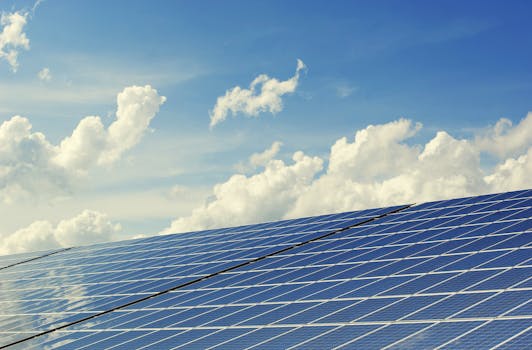Introduction to Transparent Solar Panels
As the world grapples with the pressing need for sustainable energy solutions, innovative technologies are emerging to meet this demand. One such breakthrough is transparent solar panels, which promise to revolutionize the way we harness solar energy. These panels can be integrated into windows, allowing buildings to generate electricity without compromising aesthetics. This article explores the technology behind transparent solar panels, their applications, benefits, and the future of this exciting innovation.
Understanding Transparent Solar Technology
Transparent solar panels are designed to allow light to pass through while simultaneously capturing solar energy. This is achieved through the use of special materials and coatings that can convert ultraviolet (UV) and infrared (IR) light into electricity. Unlike traditional solar panels, which are opaque and require significant space, transparent panels can be seamlessly integrated into existing structures.
How Do They Work?
The technology behind transparent solar panels typically involves the following components:
- Organic Photovoltaics (OPVs): These are made from carbon-based materials that can be engineered to absorb specific wavelengths of light.
- Transparent Conductive Films: These films allow light to pass through while conducting electricity, essential for connecting the solar cells to the power grid.
- Light-Absorbing Dyes: Some transparent solar panels use dyes that absorb UV and IR light, converting it into usable energy.
By selectively filtering light, these panels can generate electricity without obstructing the view or natural light in a building.
Applications of Transparent Solar Panels
The potential applications for transparent solar panels are vast and varied. Here are some key areas where this technology can be utilized:
- Building-Integrated Photovoltaics (BIPV): Transparent solar panels can be integrated into windows, facades, and skylights, turning entire buildings into energy-generating structures.
- Smart Glass Technology: These panels can be combined with smart glass, allowing for dynamic control of light and energy generation based on environmental conditions.
- Automotive Industry: Transparent solar panels can be used in car windows, providing a source of energy for electric vehicles without compromising visibility.
Benefits of Transparent Solar Panels
The advantages of transparent solar panels extend beyond aesthetics. Here are some key benefits:
- Space Efficiency: By utilizing existing surfaces like windows, transparent solar panels maximize energy generation without requiring additional land.
- Energy Independence: Buildings equipped with these panels can reduce their reliance on traditional energy sources, leading to lower utility bills and a smaller carbon footprint.
- Enhanced Property Value: Properties with integrated solar technology can see an increase in value due to their energy efficiency and modern appeal.
Case Studies and Real-World Examples
Several companies and research institutions are pioneering the development of transparent solar panels. Notable examples include:
- Ubiquitous Energy: This California-based startup has developed a transparent solar coating that can be applied to windows, generating energy while maintaining transparency.
- Harvard University: Researchers at Harvard have created a transparent solar cell that can be used in windows, achieving efficiencies of up to 5% in energy conversion.
- SolarWindow Technologies: This company has developed a technology that allows windows to generate electricity from both sunlight and artificial light, with potential applications in skyscrapers.
The Future of Transparent Solar Panels
The future of transparent solar panels looks promising, with ongoing research and development aimed at improving efficiency and reducing costs. As technology advances, we can expect:
- Increased Efficiency: Future iterations of transparent solar panels are likely to achieve higher energy conversion rates, making them more viable for widespread use.
- Broader Adoption: As awareness of sustainable energy solutions grows, more architects and builders may incorporate transparent solar technology into their designs.
- Regulatory Support: Governments may introduce incentives and regulations to promote the use of transparent solar panels in new constructions.
Conclusion
Transparent solar panels represent a significant advancement in renewable energy technology, offering a unique solution to the challenge of generating electricity without sacrificing aesthetics. With their ability to be integrated into windows and other surfaces, they provide an innovative way to harness solar energy in urban environments. As research continues and technology evolves, transparent solar panels could play a crucial role in the transition to a more sustainable future, making invisible electricity a reality for buildings around the world.
